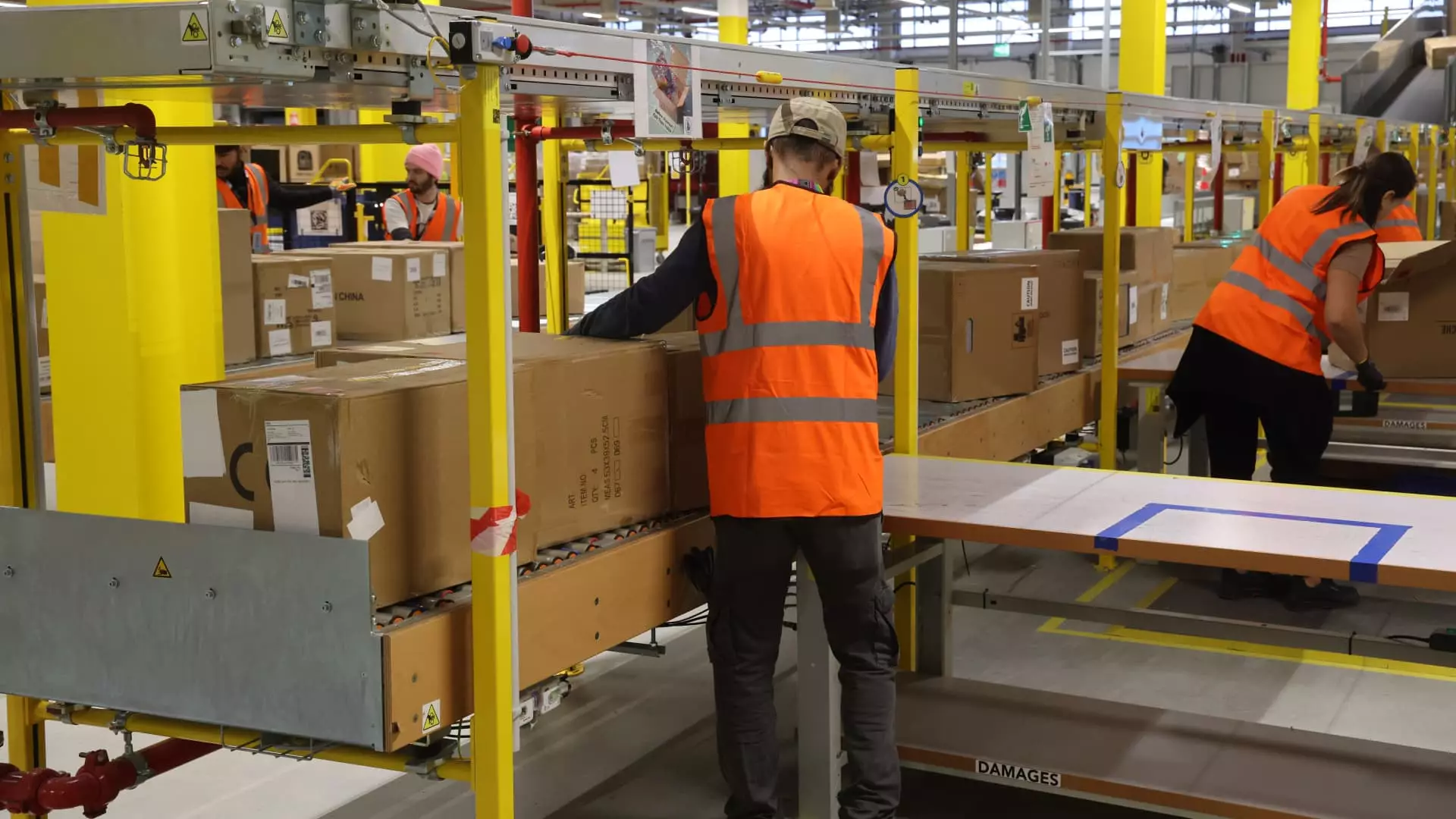In a bold assertion of technological dominance, Amazon recently celebrated a significant milestone: the deployment of its millionth robot across its global network of fulfillment centers. This achievement underscores a relentless push towards automation, positioning Amazon as the global leader in mobile robotics. The company’s latest development, the “DeepFleet” AI model, aims to streamline internal logistics further, promising a 10% reduction in travel time for robots, which translates into faster, more cost-effective deliveries. However, beneath this veneer of innovation lies a complex narrative—one that challenges traditional notions of employment, raises ethical questions, and signals a seismic shift in how industries operate.
The proliferation of robotics within Amazon’s infrastructure reflects a broader trend. Since pioneering warehouse automation in 2012, Amazon has progressively expanded the roles of these machines—from basic inventory transportation to sophisticated autonomous systems capable of managing entire sections of fulfillment centers. These advancements, while impressive from a technological standpoint, provoke questions about the sustainability of human employment in sectors heavily dependent on repetitive and physically demanding tasks. As these machines become more capable and pervasive, the traditional workforce faces an uncertain future, perhaps supplanted by a relentless wave of automation.
The Promise of Increased Efficiency versus the Threat of Job Loss
Amazon’s leadership insists that their robots complement human workers rather than replace them. Scott Dresser, Vice President of Amazon Robotics, emphasizes that these robots perform heavy lifting and repetitive chores, freeing employees to develop technological skills and focus on more nuanced roles. His optimism is reaffirmed by the fact that their “next-generation fulfillment center” in Louisiana required a 30% increase in specialized staff for maintenance, reliability, and engineering. Such claims suggest a narrative where automation acts as an enabler of new job categories, rather than eliminating jobs wholesale.
Yet, in stark contrast, the broader reality paints a different picture. A recent Pew Research survey indicates that many experts and members of the public perceive factory workers as particularly vulnerable to AI-driven displacement. The threat of job loss isn’t just hypothetical; last year alone, over 150,000 tech workers faced layoffs from nearly 600 firms, many driven by AI integration. Amazon’s own revelations about workforce reductions—over 27,000 jobs cut in just two years—highlight a growing trend of automation-led layoffs that many interpret as a precursor to a wider industry pivot.
The contradiction is brutally evident: while companies tout the productivity gains and new opportunities created by AI, they simultaneously trim their human workforce. This duality underscores the ethical dilemma that modern industry must confront—whether technological progress justifies the societal cost of shrinking employment.
The Economic and Ethical Clash of Automation’s Rise
The leadership of tech giants like Amazon and Shopify appears to walk a tightrope—one foot in technological innovation, and the other in cautious acknowledgment of the human toll. Amazon CEO Andy Jassy’s recent comments about AI automating certain roles while still expecting to hire in other AI-focused domains reflect this balancing act. His acknowledgment of a shrinking workforce, coupled with ongoing layoffs, underscores a bitter truth: automation’s disruptive power is reshaping the very fabric of employment in the tech industry and beyond.
From an economic perspective, the pursuit of efficiency through AI makes sense—reduced operational costs, faster delivery times, and increased scalability are tangible benefits. However, this comes at a societal cost that cannot be ignored. The widespread layoffs across multiple firms suggest a future where stable, long-term employment is increasingly rare, replaced by gig, part-time, or contract-based work—often less secure, less rewarding, and more precarious.
Ethically, the deployment of millions of robots raises critical questions about societal priorities. Is technological progress justified if it widens income inequality and magnifies unemployment? Can industries truly claim to support their workers while systematically replacing them with machines? The narrative of progress becomes tarnished when the human dimension is reduced to an afterthought—a cost-cutting necessity rather than a core value.
The rapid advancements in AI and robotics as exemplified by Amazon’s initiatives challenge us to rethink what progress means. Automation’s promises of efficiency and innovation are compelling, but they must be weighed against the societal consequences of widespread job displacement. Whether this epoch of technological change will usher in an era of prosperity or lead to an imbalance of wealth and opportunity depends largely on the decisions made today.

